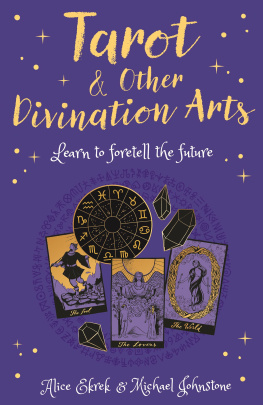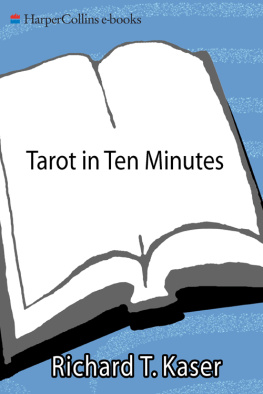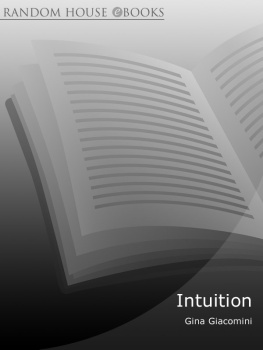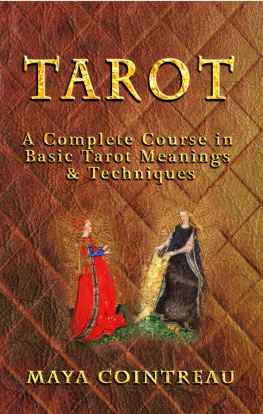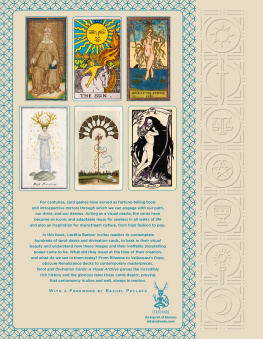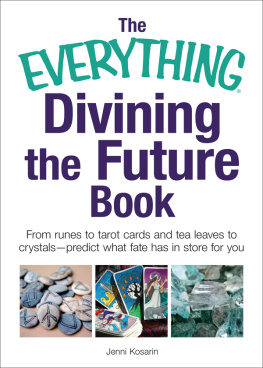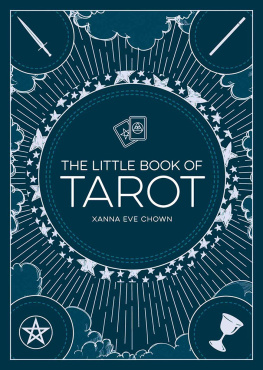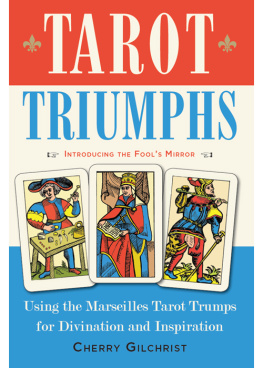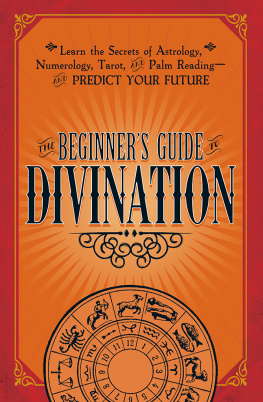
INTRODUCTION
Most of us attempt to foretell the future on a daily basis, although we may not think of it like that. From the banker who tries to predict which stocks will rise and fall to the grocer who tries to foresee how much a customer will buy of a particular product, we are all amateur soothsayers at some point in our lives. However, we also wish we could predict the future in less prosaic areas of life. What personality will our unborn child have? When will we meet our great love? Should we take that new job out of town? If only we had a crystal ball to peer into and discover the answers well, we do!
You can use the techniques in this book to discover what will happen in your life through traditional methods of divination such as the tarot, palmistry or even gazing into that crystal ball we just mentioned.
The history of fortune-telling is a long and illustrious one, but this is not a history book. It is a practical guide comprising the work of experts in the field of divinatory writing. Tarot reader and author Alice Ekrek introduces us to the tarot and how to read it. Her enlightening guide to this fascinating subject will enable you to begin your journey into the life lessons the cards can provide. If you dont own a tarot deck, we also show you how to use an ordinary pack of cards for the same purpose.
Everyday ease with divination is continued in Michael Johnstones sections on tea leaf reading, crystal divination, numerology and palmistry. The gifted astrologer Marion Williamson answers that question about a childs personality with her guide to astrological knowledge. In short, if you are in need of some guidance through more mystical means, our writers can enlighten you with this introductory guide to some of the more famous divination methods.
What is divination?
Divination is:
1. The action or practice of divining; the foretelling of future events or discovery of what is hidden or obscure by supernatural or magical means. Also, with a [article] and pl. [plural] an exercise of this, a prophecy, an augury.
2. Successful conjecture or guessing.
Not content with telling us that the word divination is a Middle English one that has its roots in Old French or Latin, and then defining the word, the 1983 edition of the Oxford English Dictionary goes on to tell us that the first recorded written use of the word in its longer meaning is found in the work of Sir Thomas North (c. 1535c. 1601). The Tudor poet wrote, The flying of birds, which doe geue a happy divination of things to come. The second meaning was first used in written form by Norths contemporary, William Shakespeare, who in Henry IV Part II wrote:
Why, he is dead.
See what a ready tongue suspicion hath!
He that but fears the thing he would not know
Hath by instinct knowledge from others eyes
That what he feard is chanced. Yet speak, Morton; Tell thou an earl his divination lies,
And I will take it as a sweet disgrace
And make thee rich for doing me such wrong.
What the dictionary definitions fail to do is give any hint of the breadth of the ways in which the action of divining can be practised. For that we must move several centuries on from Thomas North and William Shakespeare and turn to twentieth century technology the internet.
Switch on a computer, select a search engine and key in the word. Google alone offers over 16,700,000 sites to choose from! Hitting on one or the other of them will eventually lead to an extraordinary assessment of methods by which the future may be foretold. What follows was compiled by an organization called BoxArt and is reproduced here with its generous permission.
Aeromancy
This form of divination looks to the air and sky for inspiration, particularly concerning itself with cloud shapes, comets and other phenomenon not normally visible in the heavens (see also Meteoromancy).
Alchemy
The much sought after but never achieved practice of transmutation of base metals into precious metals (e.g. gold or silver) with the aid of an esoteric third substance is a form of divination, seeking as it does to use divine knowledge to alter things.
Alectryomancy
Those who divine by alectryomancy encourage a bird to pick grains of corn from a circle of letters. The letter closest to the grain pecked is noted and the words eventually formed used as an augury. A variation is to intone the letters of the alphabet at sunrise, noting those at which the cock crows.
Aleuromancy
Anyone who has ever eaten a fortune cookie has knowingly or unknowingly indulged in aleuromancy whereby answers to questions are rolled into balls of dough, which once baked are chosen at random by those who have questions to ask.
Alomancy
Also known as halomancy, this form of divination involves studying the patterns made by table salt poured from the hand of the practitioner onto a consecrated surface or small area of land preferably used only for the purpose of divination.
Alphitomancy
Baking is the media by which some diviners look to find the truth. Specially baked cakes are fed to those who stand accused of a misdeed of some sort, to establish guilt or innocence. The cakes are digestible by someone with a clear conscience but are unpleasant to those with guilt written on their minds.
Anthropomancy
Now long-outlawed, anthropomancy is a means of divination that involves human sacrifice.
Apantomancy
The chance meeting with animals such as black cats, many types of birds and other creatures is believed by some to be a sign of things to come. The siting of Mexico City was a result of apantomancy. According to legend, Aztec practitioners of the art saw an eagle, a live snake in its mouth, soar into the air from the cactus on which it had been perched, and took this as a sign that such a spot would be the place around which to build a settlement!
Astraglomancy
Sometimes known as astragyromancy, this method of selecting a path through the future uses special dice that bear numbers and letters on their sides.
Astrology
Those who practise this, one of the oldest, most popular and scientific forms of divination, look to the Sun, the Moon, the planets and the stars, and their position and passage through the sky to tell on whom the Sun will be shining in future. The Babylonians practised the art, and it is more or less accepted by most people who have looked at the relevant research with an open mind that the Great Pyramid and other mausoleums in the Nile Valley were built with astrology very much in mind.
Austromancy
The way the wind is blowing is believed by some to provide a guide as to what prevailing currents hold in store in days to come.
Axiomancy
When an axe or hatchet is driven into a post, the way in which it quivers before settling is thought to provide a signpost to what will occur in the days to follow.
Belomancy
Similar to axiomancy (see above) the ancient art of belomancy looks to the flight of arrows and how they move when they hit their target to point the way to what lies ahead.
Next page
